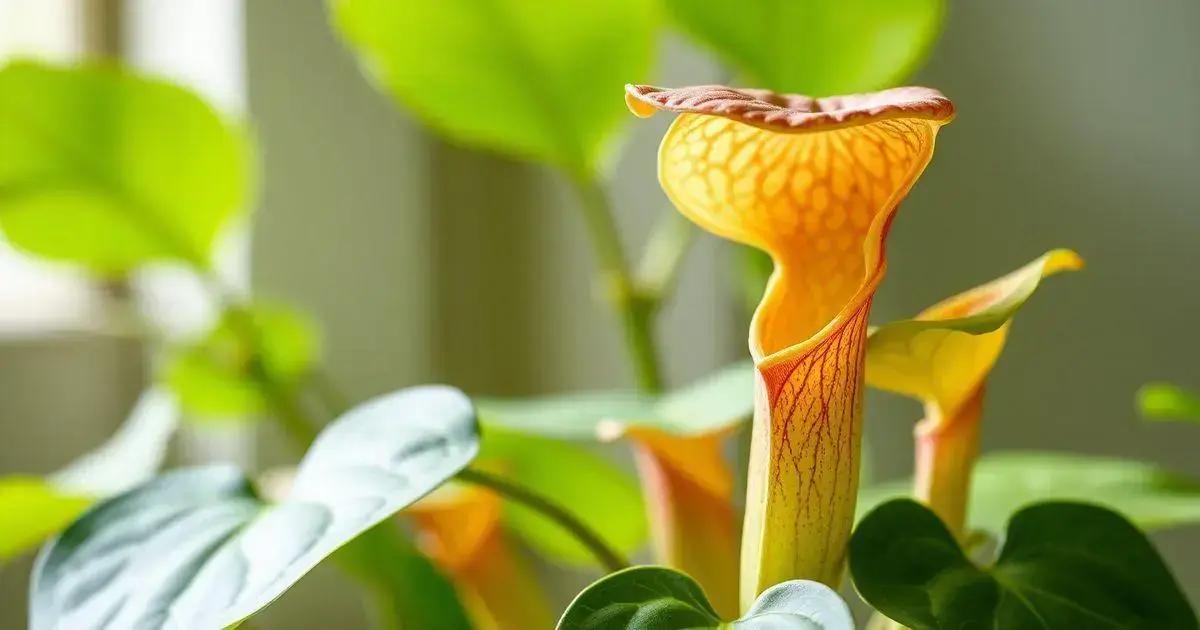How to Care for Pitcher Plants: 5 Proven Tips for Thriving Specimens
How to care for pitcher plants is a question many plant enthusiasts ponder as they seek to maintain these unique carnivorous wonders. Like many plants, they have specific requirements that, when met, can lead to beautiful growth and fascinating behaviors. Let’s explore the essential aspects of caring for these captivating plants and uncover tips for keeping them healthy and vibrant.
Table of Contents
ToggleUnderstanding pitcher plant watering needs
Understanding pitcher plant watering needs is vital for ensuring your plants thrive. Proper watering techniques can vastly improve their health and growth.
Pitcer plants are unique in their watering demands compared to other houseplants. Here’s what you need to know:
- Use distilled or rainwater instead of tap water, as pitcher plants are sensitive to chemicals and minerals.
- Water frequency should be consistent; typically, every 2-4 days during growing seasons.
- Ensure the soil remains damp but not waterlogged; overwatering can lead to root rot.
- Monitor the humidity around your pitcher plants, as they flourish in moist environments.
To help you maintain the right watering routine, here’s a simple guide:
- Assess the moisture level of the soil with your finger. If it feels dry an inch below the surface, it’s time to water.
- Empty any excess water from the saucer beneath the pot to avoid standing water.
- Adjust your watering schedule based on the season; more frequent watering may be necessary in warmer months.
Additionally, certain factors can affect your pitcher plant’s watering needs:
| Factor | Impact on Watering |
|---|---|
| Temperature | Warmer conditions increase evaporation; plants may need more water. |
| Humidity | Higher humidity means less frequent watering is required. |
| Plant Size | Larger plants may require more water than smaller ones. |
In summary, understanding pitcher plant watering needs entails providing consistent, gentle hydration while avoiding waterlogged conditions. For more on managing different plant types, consider exploring indoor gardening techniques. By following these tips, you can create a thriving environment for your pitcher plants to flourish.
Ideal light and temperature for pitcher plants

Ideal light and temperature for pitcher plants are crucial for their successful growth and development. Understanding these requirements will help you create the perfect environment.
Pitcher plants thrive in conditions that mimic their native habitats, typically characterized by warm temperatures and bright, indirect light.
Light requirements for pitcher plants
When it comes to lighting, providing adequate exposure is key. Here are some important points to consider:
- Aim for bright, indirect sunlight for at least 12 hours daily.
- Use fluorescent or grow lights if natural light is insufficient.
- Too much direct sunlight can scorch the leaves; ensure they are sheltered from intense afternoon sun.
Temperature preferences for optimal growth
Temperature also plays a vital role in the health of your pitcher plants. Here’s how to maintain ideal conditions:
- Keep daytime temperatures between 70°F and 85°F.
- At night, temperatures can drop to around 50°F to 60°F.
- Monitor temperature fluctuations to avoid stress on the plants, particularly during seasonal changes.
Here’s a quick overview of temperature and light pairing for specific pitcher plant varieties:
| Pitcher Plant Variety | Ideal Light | Optimal Temperature |
|---|---|---|
| Sarracenia | Bright, indirect | 65°F – 85°F |
| Nepenthes | Filtered light | 70°F – 90°F |
| Darlingtonia | Partial shade | 50°F – 70°F |
Following these guidelines will help you create a thriving atmosphere for your pitcher plants. For additional insights on plant care, consider exploring indoor gardening techniques that can enhance your gardening experience.
How to feed and manage pitcher plant pests
How to feed and manage pitcher plant pests is essential for their health and vitality. Although these plants are carnivorous, they still require proper care to thrive.
Feeding your pitcher plants involves understanding their nutrient needs and effectively controlling any pests that may invade their environment.
Nutritional needs of pitcher plants
Pitcher plants obtain nutrients primarily from the insects they trap, but supplemental feeding can enhance their growth.
- Use diluted liquid fertilizer every month during the growing season.
- Feed your plants with insects like fruit flies, ants, or small moths if indoor feeding isn’t possible.
- Never overfeed; too many nutrients can harm your plants.
Common pests affecting pitcher plants
Understanding the pests that target pitcher plants is crucial for effective management. Common pests include:
- Mealybugs
- Spider mites
- Scale insects
To manage these pests effectively, consider these best practices:
- Inspect your plants regularly for signs of infestation.
- Remove pests by hand or use a soft brush to clean leaves.
- Apply insecticidal soap or neem oil as a natural remedy.
Preventing pests is better than managing them after infestation. Here are some preventive measures:
| Prevention Method | Description |
|---|---|
| Maintain humidity | Pests thrive in dry conditions; keeping humidity levels high helps deter them. |
| Avoid overcrowding | Give each plant space to breathe, reducing pest attraction. |
| Quarantine new plants | Always check new plants for pests before introducing them to your collection. |
By understanding how to feed and manage pitcher plant pests effectively, you can promote healthy growth and minimize potential issues. For further insights on cultivating diverse plants, consider exploring indoor gardening techniques.
In conclusion
Caring for pitcher plants requires attention to various factors including watering, light, temperature, feeding, and managing pests. By understanding their unique needs, you can create an environment where these fascinating carnivorous plants thrive. Remember to regularly monitor their conditions, use proper feeding techniques, and maintain pest management strategies to ensure their health and vitality. For further insights and tips on enhancing your indoor garden, continue exploring resources that can help elevate your gardening skills.

